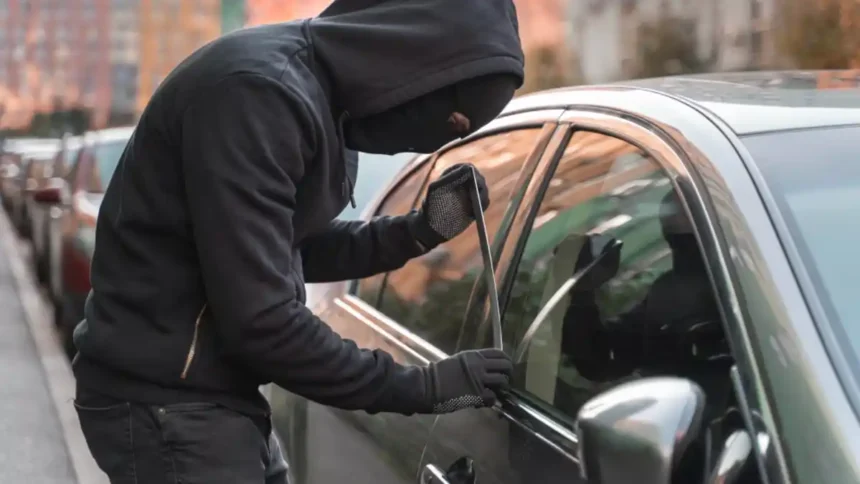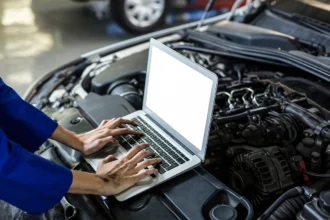In a world increasingly dependent on technology, even the most unexpected aspects of our lives are going digital—your car included. The convenience and connectivity of modern vehicles come with a new set of vulnerabilities. Car hacking is no longer a distant, futuristic threat; it’s a real issue, and the risks are growing every day. But how vulnerable are modern vehicles to cyberattacks? More importantly, what can car owners in the USA do to protect themselves?
This article dives deep into the risks of car hacking, explores how hackers target vehicles, and highlights the essential steps drivers can take to secure their cars. From understanding vehicle cybersecurity to knowing the signs of a hacked car, we’ve got you covered.
What Is Car Hacking?
Car hacking refers to the manipulation or compromise of a vehicle’s digital systems by unauthorized individuals. Modern vehicles are equipped with computers, software, and sensors, all of which can be vulnerable to cyberattacks. While hacking into a car may seem like a scene straight out of a sci-fi movie, it’s a real and growing concern, especially with the rise of smart cars and the Internet of Things (IoT) in the automotive industry.
How Do Hackers Gain Control of a Vehicle?
Hackers can exploit a vehicle’s systems in various ways, such as:
- Remote Access via Key Fobs – By intercepting signals from keyless entry systems, attackers can unlock and even start vehicles.
- Malware in Infotainment Systems – Infotainment systems connected to the internet or external devices are a common entry point for malware.
- Telematics Hacking – Telematics systems that send and receive data remotely can be compromised if not properly secured.
- Onboard Diagnostics (OBD) Port – This port, used by mechanics to diagnose issues, can be hijacked by hackers with physical access to the vehicle.
The growing connectivity between vehicles and external networks is opening doors for hackers, making vehicle cybersecurity a crucial focus for car manufacturers and owners alike.
The Rise of Vehicle Cybersecurity Concerns in the USA
In the USA, where nearly every modern car is equipped with wireless connectivity, GPS, or automated systems, the potential for car hacking is greater than ever. As cars become more automated, hackers have more digital entry points to exploit.
According to the FBI and the National Highway Traffic Safety Administration (NHTSA), car hacking incidents in the USA have been on the rise in recent years. In 2022 alone, there were numerous reports of hackers exploiting vulnerabilities in vehicle systems, ranging from key fob hacking to taking control of steering and braking functions.
The USA automotive industry is now placing an increased emphasis on vehicle cybersecurity. However, many car owners remain unaware of the risks and how to protect themselves.
Top 5 Common Ways Hackers Target Modern Vehicles

To better understand the risks of car hacking, here are five common ways hackers can compromise modern vehicles:
- Keyless Entry Hijacking
- Hackers can intercept the radio frequency signal between a car and its key fob, enabling them to unlock and start the vehicle without the owner’s key.
- Connected Car Vulnerabilities
- Cars with internet-enabled infotainment systems can be hacked through weak security protocols. This allows attackers to install malware or even access the car’s central systems.
- Telematics Systems
- Vehicles that rely on telematics for navigation or diagnostics data can be vulnerable to external attacks, especially if the communication between the vehicle and the external network is not properly encrypted.
- Over-the-Air Software Updates
- Many cars receive software updates remotely. If a hacker intercepts or manipulates these updates, they could install malicious code.
- Physical Access to the OBD Port
- The onboard diagnostics (OBD) port, often used by mechanics for repairs, can also be an entry point for hackers who have physical access to the vehicle.
What Can Car Owners Do to Protect Themselves from Car Hacking?
As the threat of car hacking grows, taking proactive steps to secure your vehicle’s systems is essential. Below are some best practices to protect your car:
- Regularly Update Software
- Car manufacturers often release security patches and software updates to fix vulnerabilities. Ensure your vehicle’s software is always up-to-date.
- Use Secure Wireless Networks
- Avoid connecting your car to public Wi-Fi networks. Hackers can exploit weak security protocols in these networks to gain access to your vehicle.
- Disable Unnecessary Features
- Features such as remote start, Bluetooth, or Wi-Fi are potential entry points for hackers. If you’re not using them, disable these options to minimize risk.
- Use a Signal Blocker for Key Fobs
- Key fob signal blockers, or Faraday pouches, prevent thieves from intercepting the signal between your key and car.
- Monitor for Unusual Activity
- Keep an eye on your vehicle’s behavior. If your car suddenly acts differently—such as unlocking on its own or the infotainment system malfunctioning—it could be a sign of a hacking attempt.
How Manufacturers Are Addressing Vehicle Cybersecurity

Car manufacturers are well aware of the risks posed by car hacking and have started to implement stronger security measures. Some of the most common approaches include:
- Advanced Encryption – Modern vehicles now use end-to-end encryption to protect data communication between the car and external systems.
- Multi-layer Security Systems – Many carmakers have adopted a layered approach to cybersecurity, incorporating various defense mechanisms at different levels of a vehicle’s software and hardware.
- Cybersecurity Partnerships – Manufacturers are partnering with cybersecurity firms to stay ahead of emerging threats.
Despite these advancements, no system is entirely foolproof. As technology evolves, so do the methods used by hackers.
Table: Vulnerabilities in Common Car Systems and Their Impact
| Car System | Potential Vulnerability | Possible Impact of Hacking |
|---|---|---|
| Keyless Entry | Signal interception | Unauthorized vehicle access |
| Infotainment System | Malware via external connections | Compromise of personal data or system malfunction |
| Telematics | Unencrypted data transmission | Hijacking of navigation and communication functions |
| OBD Port | Physical access exploitation | Manipulation of engine control or diagnostic data |
| Over-the-Air Updates | Weak security in update channels | Installation of malicious software |
Frequently Asked Questions (FAQs)
Q1. How can I tell if my car has been hacked?
A: Common signs of a hacked vehicle include malfunctioning systems such as the infotainment or navigation, unexplained unlocking of doors, or sudden issues with the engine and braking systems. If your car starts acting strangely, it’s essential to have it checked by a professional.
Q2. Are all modern cars vulnerable to hacking?
A: Yes, any car with electronic control units (ECUs) or internet-connected systems can potentially be hacked. However, newer vehicles that rely heavily on digital systems tend to be more at risk.
Q3. Can I prevent my car from being hacked?
A: While you can’t entirely eliminate the risk, you can significantly reduce it by keeping your vehicle’s software up to date, using strong cybersecurity practices, and disabling unused features that may serve as entry points for hackers.
Q4. What should I do if I suspect my car has been hacked?
A: If you suspect your car has been hacked, disconnect any wireless connections and contact your car dealer or a cybersecurity expert immediately to diagnose and resolve the issue.
Q5. Are electric vehicles (EVs) more vulnerable to hacking than traditional cars?
A: Electric vehicles often have more advanced digital systems, which can create more entry points for hackers. However, manufacturers of EVs are increasingly focused on cybersecurity, implementing strong encryption and multiple layers of protection.
Final Thoughts: The Future of Vehicle Cybersecurity
As modern cars become more connected and autonomous, the risks of car hacking are only going to increase. The USA is already taking steps to address this growing concern, with manufacturers investing in stronger cybersecurity systems. However, car owners must also take responsibility for their vehicle’s security by staying informed and adopting good cybersecurity practices.
Car hacking may sound like a far-off concern, but the reality is that your car could be vulnerable today. By understanding the risks and knowing how to protect your vehicle, you can stay one step ahead of cybercriminals and keep your ride safe.
Stay secure, and remember: just like you protect your home from intruders, your vehicle deserves the same level of vigilance in the digital age.








